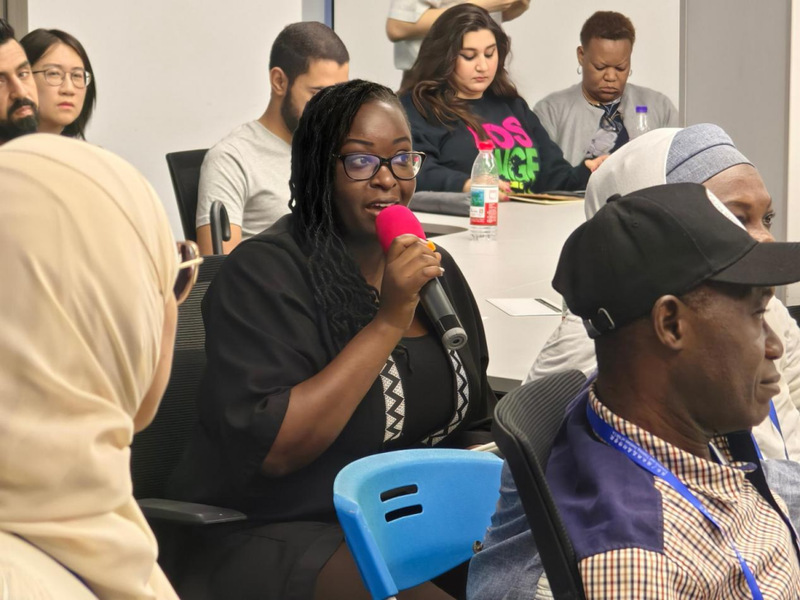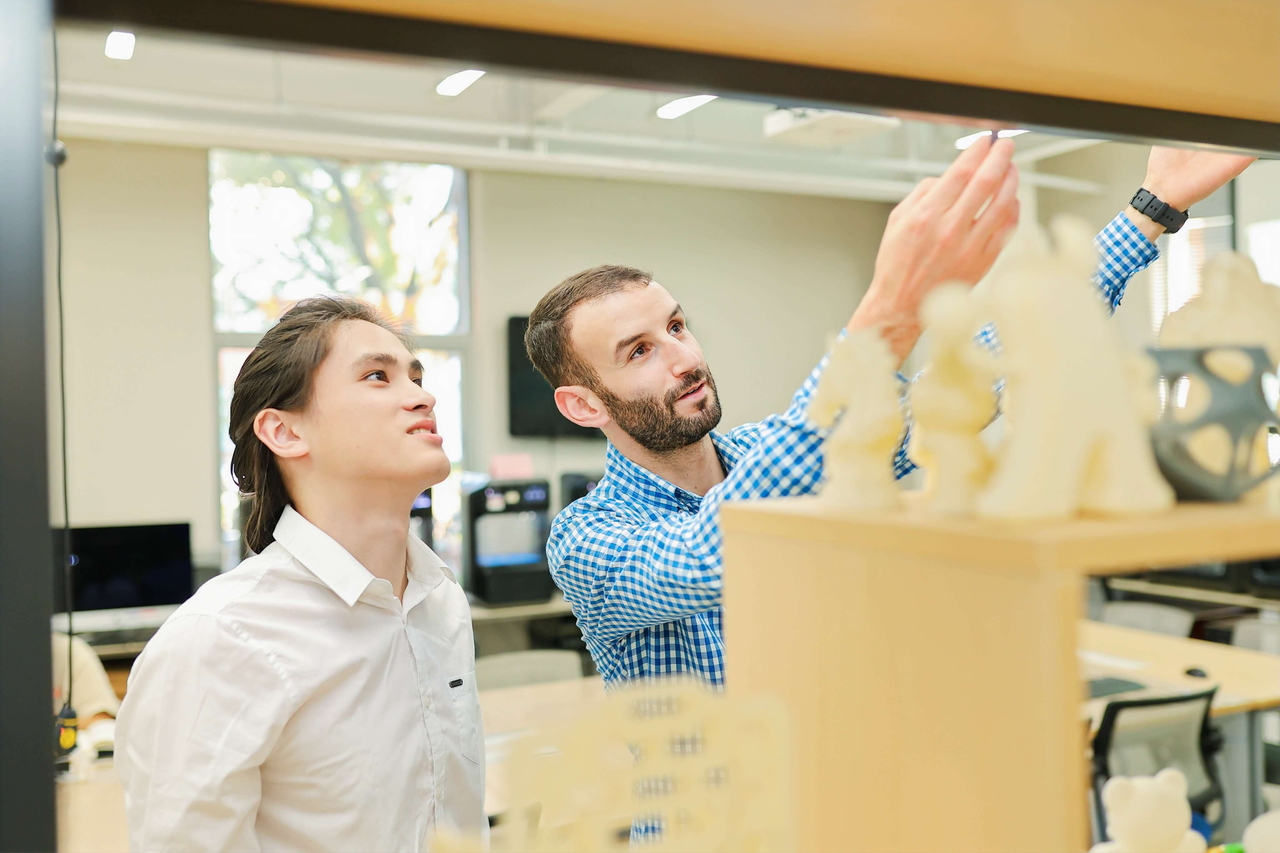Riding the Wave: The Diverse “AI+” Disciplinary Ecosystem in Chinese Higher Education
The Rising Tide
China's pool of AI talent is expanding at a striking pace, with an average annual compound growth rate of 28.7%, reaching 52,000 individuals to date. This remarkable surge has been fuelled by Chinese universities' proactive embrace of the AI wave, in alignment with the imperatives of digital transformation and educational modernisation. Through the renewal of traditional disciplines, the deep integration of interdisciplinary fields, and the establishment of emerging AI-focused programmes, universities are exploring systematic and large-scale pathways for developing an "AI+X" disciplinary landscape.[1]
Advancing with the Current
AI is inherently comprehensive and interdisciplinary, encompassing algorithmic theory, computational architecture, data science, and cognitive science. At the same time, it functions as a catalytic force that permeates nearly every field of knowledge, serving as a leading driver of innovation. Its interaction with traditional disciplines, therefore, is not characterised by unilateral disruption or substitution but rather by deep mutual engagement and reciprocal empowerment across knowledge systems, research methodologies, and application domains. This collaboration fosters the co-evolution of disciplinary paradigms and unlocks vast potential for cross-domain co-creation and structural transformation. Only when AI is fully integrated with the theoretical foundations and practical applications of diverse fields can its maximum innovative potential be realised.
Within the framework of disciplinary development, AI empowers traditional academic systems through three primary pathways. First, endogenous innovation within existing disciplines, whereby AI technologies are incorporated into established theories and methods to enable iterative renewal of knowledge systems and research tools. Second, interdisciplinary convergence, which promotes deep coupling between AI and other disciplines across theoretical, methodological, and applied dimensions, giving rise to hybrid forms such as "new engineering" and "new science." Third, the creation and evolution of emerging disciplines, in which new fields of research and application emerge around AI itself and its derivative technologies, thereby expanding the boundaries of higher education and research systems.
Innovation in Traditional Disciplines
Under the impetus of AI, both foundational and applied disciplines are undergoing comprehensive transformation, ranging from research methodologies to application scenarios. This transformation is particularly evident in the expansion of disciplinary boundaries, the upgrading of research tools and methods, and the breakthroughs in theoretical systems.
Linguistics provides a compelling example. As Professor LIULiu Haitao of Fudan University observes, language is not only a window into intelligence but also the ignition point of the current digital–intelligence revolution and a critical entryway for AI to decode the software system of humanity. Universities such as Beijing Language and Culture University and Xi'an International Studies University have established cross-disciplinary laboratories on AI and linguistics, while comprehensive universities such as Beijing Normal University and Hunan University have prioritised the cultivation of interdisciplinary talent in "language + AI" through new programmes. These initiatives demonstrate how AI is reshaping research agendas and driving theoretical innovation within traditional fields, while continually updating academic methodologies.
Moreover, AI has equipped traditional disciplines with powerful new tools such as big data analytics and behavioural modelling, enabling scholars to gain more precise insights into the complexities of social phenomena and human behaviour. Xiamen University, for instance, has sought to integrate AI technologies into the teaching and application of economics and finance in order to strengthen professional skills and improve educational quality. Building on a solid technological foundation, the university's Key Laboratory of Econometrics has deployed a locally integrated AI workstation featuring the Deepseek full-stack model matrix within the economics discipline, facilitating innovative applications by both students and faculty across diverse scenarios.[2] In terms of talent cultivation, the university has anchored its economics programme in an "Economics+" framework, adopting a dual-driven model of "quantitative analysis + AI modelling" to train versatile professionals equipped with expertise in both economics and AI. Furthermore, Xiamen University has introduced minors in AI Economics, Data Science and Big Data Technology, thereby promoting cross-disciplinary education across the institution.[2]

Beyond theory, AI-driven innovations in traditional disciplines extend to industrial and societal problem-solving. The College of Media and International Culture of Zhejiang University has pioneered research into AI-enabled green screen production, as well as the relationship between AI and social trust.[3][4] It also spearheaded the creation of the International Digital Equity Alliance (IDEA), working with UNESCO to address pressing challenges in the Global South within the global digitalisation process, such as the technological divide and inequitable value distribution.[5] In this context, Zhejiang University proposed a community-based data-sharing governance model and initiated the Digital Equity Handbook to promote digital empowerment and inclusive governance. Meanwhile, Fudan University, in collaboration with the Shanghai Academy of AI for Science, has developed CardioMind Beta, a medical large model for cardiovascular care. This system realises full-process intelligentisation from medical history collection to diagnostic support, while ensuring data security through the anonymisation of patient information.[6]

Confluence of Currents: Interdisciplinary Integration
Beyond empowering traditional disciplines, AI is increasingly serving as a "catalyst" for interdisciplinary integration, driving the emergence of hybrid disciplines. Interdisciplinary integration is not merely the convergence of knowledge domains; it represents an academic transformation that renews established knowledge systems. This process is driving the convergence of fundamental disciplines such as physics, mathematics, and chemistry with related domains, steering them toward the "new engineering" and "new science" paradigm shifts, and revitalising existing knowledge systems in the era of intelligent digitalisation. By leveraging AI, traditional fields are opening new avenues of inquiry, accelerating innovation and knowledge discovery, and extending their reach from purely theoretical domains into applied practice, while at the same time laying a solid foundation for AI technological breakthroughs and original innovations.
Interdisciplinary integration is spearheaded by talent cultivation. In 2025, Shanghai Jiao Tong University's Paris Elite Institute of Technology, in partnership with École Polytechnique and Université Paris Sciences et Lettres, launched the inaugural "Descartes Class," offering undergraduates an integrated training model that combines mathematics, physics, AI, and engineering.[7] In the same year, Tsinghua University announced the establishment of a new undergraduate liberal arts college designed to highlight AI's driving role in teaching design and research innovation, anchored in the principle of AI-enabled interdisciplinary integration.[8] Moreover, both Tsinghua and Fudan Universities are accelerating AI curriculum development. Tsinghua plans to introduce a new AI minor and certificate programme, while Fudan has launched a large-scale AI course initiative, aiming to offer at least 100 AI-related courses within a year, covering all undergraduate, postgraduate, and primary disciplinary programmes. [9] These courses seek to cultivate versatile professionals with both AI literacy and technical competence, enhancing their specialised learning while also fostering interdisciplinary synthesis.

The deeper value of AI's integration lies in its capacity to drive both knowledge system innovation and industrial application breakthroughs. Unlike AI's primarily instrumental role within traditional disciplines, its function in interdisciplinary contexts is characterised by the expansion of research paradigms, the discovery of new knowledge, and reciprocal feedback that further advances AI technologies. For example, at Fudan University, undergraduates across different faculties co-developed the algorithmic tool VQ Crystal, which has revolutionised the research paradigm for crystal material discovery and been applied in the design of both 3D and 2D materials.[10] Similarly, a team from Shanghai Jiao Tong University's School of Integrated Circuits became the first to embed time variables into AI models, developing ManuDrive, the world's first "time-dimension-based AI industrial control system", which enables dynamic prediction and precise remote regulation of complex fermentation processes.[7]
Emergence of New Disciplines
AI is shifting from a frontier technology confined to laboratories into a core discipline within classrooms. In recent years, the development of AI-related programmes in Chinese universities has gone beyond upgrading curricula or layering AI onto existing majors; it has increasingly become a bridge for deep integration among industry, academia, and research.
In May 2025, Tsinghua University, together with Sichuan University, Zhejiang University, and technology enterprises such as Tencent, Huawei, and JD.com, co-founded the Jittor Industry–Academia–Research Alliance. This platform is designed to integrate the technological strengths and application expertise of enterprises with the advanced theoretical knowledge of universities, thereby developing deep-learning frameworks and accelerating the transformation of innovations across the AI industry chain.[11] Tsinghua has also partnered with Tencent to establish China's first postgraduate programme in Large Model Science and Engineering. By combining Tencent's real-world application scenarios and challenge-driven projects with Tsinghua's AI theoretical instruction, the programme seeks to cultivate students' engineering practice skills and capacity for scientific and technological innovation.[12] In parallel, Renmin University of China and Peking University, for instance, have partnered with the CBJ Think Tank to establish the AI Industry–Academia–Research Business Collaboration Alliance. Leveraging the think tank's informational advantages, this alliance seeks to align academic training with frontier market demands, foster versatile talent, and accelerate the industrialisation of AI achievements.[13] Similarly, Beihang University and Nankai University have launched initiatives such as the "Mathematics and AI Experimental Class" and the "AI Industry–Academia–Research Collaborative Education Platform", both initiatives place strong emphasis on university–industry cooperation to nurture professionals equipped for cross-sector innovation.
This mode of AI disciplinary construction, centred on deep integration of industry, academia, and research, is driving Chinese higher education from knowledge transmission toward knowledge co-creation. From classrooms to laboratories, from corporate R&D centres to international collaboration platforms, the learning and practice of AI are forming a value chain that seamlessly connects education, research, and industry.
Sailing into the Deep Blue
These diverse practices demonstrate that the integration of advanced technologies with the principle of open sharing not only bridges disciplinary divides but also endows education with lasting momentum for advancing sustainable social development. Drawing on a solid foundation of scientific research, a well-established educational system, and close collaboration with industry, Chinese universities have forged a full-chain advantage in integrating AI with academic disciplines, from conceptual innovation to practical implementation. In this resonance of technology and scholarship, a cohort of exemplary teaching and research models has emerged, rooted in local contexts yet oriented toward global horizons.
References:
[1] 教育部关于印发《高等学校人工智能创新行动计划》的通知. 中华人民共和国教育部, 2018-04-03, http://www.moe.gov.cn/srcsite/A16/s7062/201804/t20180410_332722.html;上海高校研发的人工智能教育大模型,亮相世界人工智能大会. “第一教育”《上海教育》, 2025-07-26, https://mp.weixin.qq.com/s/8iX7j8i8RNos40uPch8bSA
[2] 经济学科全面接入Deepseek,实践探索AI赋能教学科研与行政工作. 王亚南经济研究院, 2025-02-24, https://wise.xmu.edu.cn/info/1831/188601.htm
[3] 共探人工智能与传媒融合的新图景——“一带一路”国家媒体人走进我院. 浙江大学传媒与国际文化学院, 2025-04-30, http://www.cmic.zju.edu.cn/2025/0430/c35554a3045117/page.htm
[4] 人工智能与社会信任跨学科圆桌讨论会顺利举行. 浙江大学传媒与国际文化学院, 2025-04-30, http://www.cmic.zju.edu.cn/2025/0430/c35554a3044861/page.htm
[5] 我院携手联合国科教文组织在巴黎总部举办“数字平等”国际学科联盟特别会议. 浙大传媒国际, 2025-06-20, https://mp.weixin.qq.com/s/LjwYOFANMfQ85wix8pNv5g
[6] 我国首个心血管专科AI医生在中山医院发布. 上观新闻, 2025-02-28, https://news.fudan.edu.cn/2025/0228/c1247a144297/page.htm
[7] 沪上各大高校接连构筑“AI+”新平台 促进科研范式改革赋能学科跃升 在“试验区”奋力打造AI领军人才高地. 解放日报, 2025-05-17, https://www.shanghai.gov.cn/nw4411/20250517/ac074d32375f4aeebc41f0cc764272e7.html
[8] 清华今年拟成立新书院扩招150名本科生 重点培养“AI+”拔尖创新人才. 新华网, 2025-03-04, https://www.tsinghua.edu.cn/info/1182/117279.htm
[9] 国内外高校AI课程升级:聚焦AI人才培养,探索学科交叉融合. 搜狐网, 2025-06-11, https://www.sohu.com/a/903248030_121924584
[10] ZiJie Qiu, Luozhijie Jin, et al. VQCrystal: Leveraging Vector Quantization for Discovery of Stable Crystal Structures, Materials Science, (2024). DOI: arxiv-2409.06191.
[11] “计图”产学研联盟在清华大学成立. 清华大学计算机系图形学实验室, 2025-05-30, https://cg.cs.tsinghua.edu.cn/jittor/news/2025-05-30-13-45-00-00-ChanXueLianMeng/
[12] 我院联合腾讯打造全国首个“大模型科学与工程”研究生项目. 清华大学深圳国际研究生院, 2025-07-14, https://www.sigs.tsinghua.edu.cn/2025/0714/c7690a284366/page.htm
[13] 中国人民大学、清华大学、北京大学携手多方成立“人工智能产学研商业协同联盟”打造AI生态新标杆. 搜狐新闻, 2025-06-23, https://www.sohu.com/a/906812497_44754




